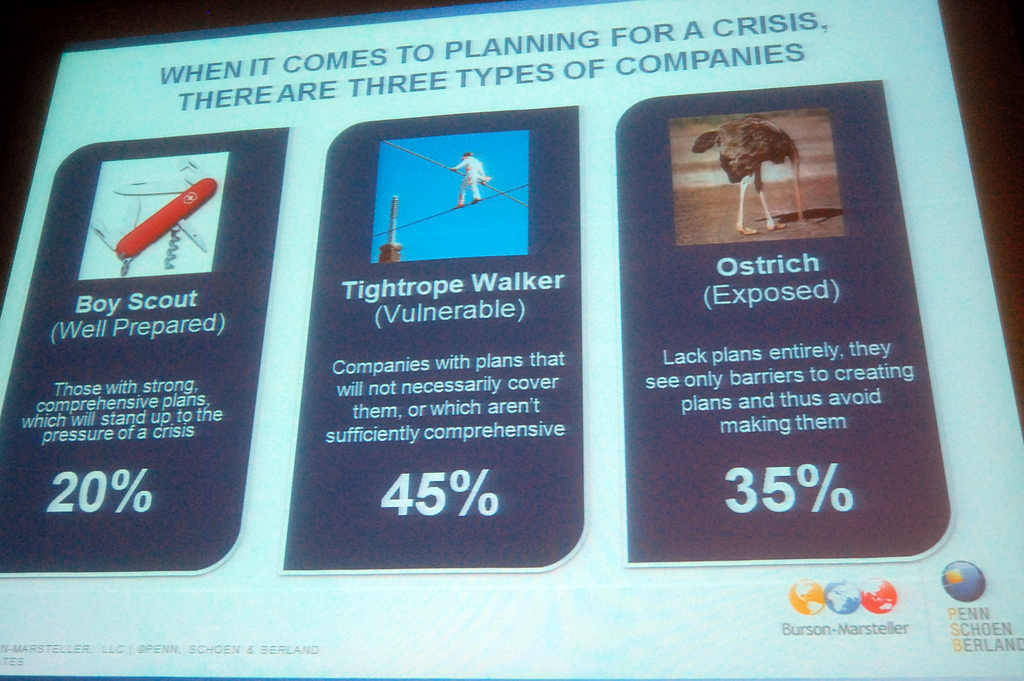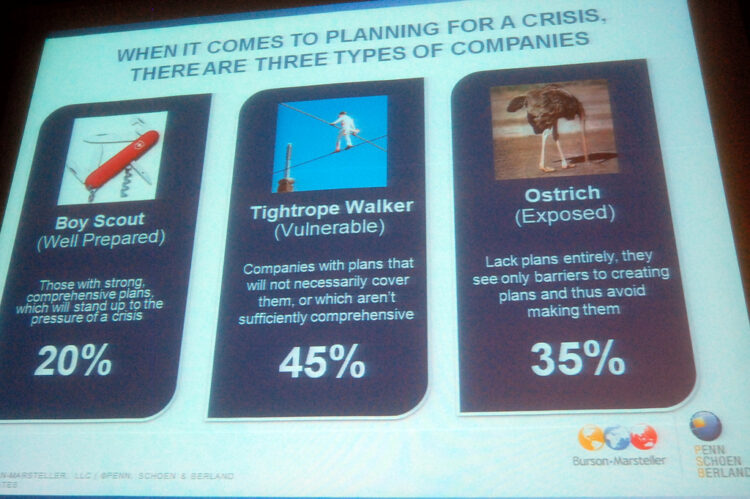
For companies new to social media, the Twitterverse and world of Facebook can seem downright frightening. What if someone says something bad about my company? What if I miss something a customer says and they get upset?
It’s okay to be anxious about social media at the beginning–nearly everyone is–but one of the best ways to overcome that is to craft a strategy for how you’ll operate day-to-day on social media. A good strategy covers everything from what sources you’ll draw from, to what’s okay to post and what isn’t, to what you’ll do if someone says something bad about your brand. The latter is what frightens most newcomers to social media, but even that is easily overcome with a little bit of planning.
Crisis management on social media generally isn’t very difficult so long as you’ve clearly laid out operating procedures (or rules of engagement) beforehand.
A basic set of rules of engagement for crisis management can be broken down into 4 easy steps, and these steps apply whether you’re passing off management of your social media to someone in-house, or outsourcing it to a company like SMC. Have a look below for everything you need to know about crafting a contingency plan for negative comments on social media:
- Decide who you want to have control over responses to negative comments.
To set yourself up for success if and when a negative comment appears, you first need to decide who you want your primary point of contact to be for crafting a response and/or handing down a desired course of action. Is this your social media manager? Possibly, but it could very likely be someone with a little more clout within your organization. What about a C-level? Maybe–but you want this contact to be easy to get in touch with and quick to respond, which is much more difficult if you’re as busy as an executive.
Ideally, this would be a person with some management clout within your organization who’s capable of making good branding decisions within the company. This doesn’t have to be your CMO, but should be someone with good enough judgment to make a quick decision on how to respond before things get out of hand.
- Figure out exactly what a negative comment looks like.
As important as it is to know who you want to be in charge of dealing out responses, it’s also very important to determine what a negative comment looks like (and remember, not all comments warrant a response). Do you want your social media manager to get in touch with you if something looks neutral? How bad do things have to be before you step in? Being very clear about this beforehand is a good way to make sure that things don’t get lost in the mix in the heat of the moment.
- Draft a few responses to negative comments before launch.
Knowing how you’ll respond, even if just in very general terms, is the next step here. Draft up a few responses (e.g. “@Johnwdarwin I’m sorry to hear that you had a bad experience–how can we make things better?”) that give you an idea of what a good response looks like, and be prepared with a few of them.
I don’t encourage copy-pasting if and when a negative comment rolls around, but going through a drafting exercise is a good way to get your mind thinking about how you’re going to respond should something come up. All too often, brands monitor their social media regularly (good) without really knowing how to respond to negative comments (bad). Even if you change your mind about what you want to say down the road, at least you’ll have sat down and thought of a few ways to work through the situation.
- Monitor your social media for negative comments, and respond quickly when you see one.
You’ve already crafted your contingency plan, and now it’s time for execution. Monitor your social media accounts (whether through a tool like Sprout–which we use here at SMC–or through simple searches for mentions of your company on all the platforms where you’re active) and look out for what people have to say.
There’s a chance that no one will ever say anything bad about you–if that happens, great–but the only way to actually be able to respond is to know what’s happening in the first place. If you do see a negative comment, respond quickly. You have all the procedures in place, and now all you have to do is run through them like you’ve no doubt practiced over time.
Especially for companies with more experience in traditional advertising and media, the thought of needing to have an immediate response to any kind of consumer or customer interaction is strange, and as such, it’s very easy to lose sight of just how important it is to respond quickly on social media. The minute you begin bogging yourself down with a complicated contingency plan, you’ve already started decreasing your effectiveness on social media.
That’s perhaps the most important takeaway here: whatever plan you do come up with, make sure that it revolves around speed. You don’t have to respond within 60 seconds to someone saying something bad about your brand, but you should try to get something done within a few hours if you want to avoid things spiraling out of control.
In our experience, if you’re a small- or medium-sized business and don’t do anything too controversial, negative comments on social media will be few and far between (don’t let the thought of negative comments scare you away–it’s better to be a part of the conversation than to avoid it altogether). Even so, having a crisis management plan in place is a very good idea, and will keep things from getting out of hand if you do happen to come across a disgruntled customer.
And hey, even if you do happen to come across a negative fan or two on social media, don’t worry–it could be worse. At least you know you’re not Amy’s Baking Company.
Image Credit: CC by Kevin Krejci



